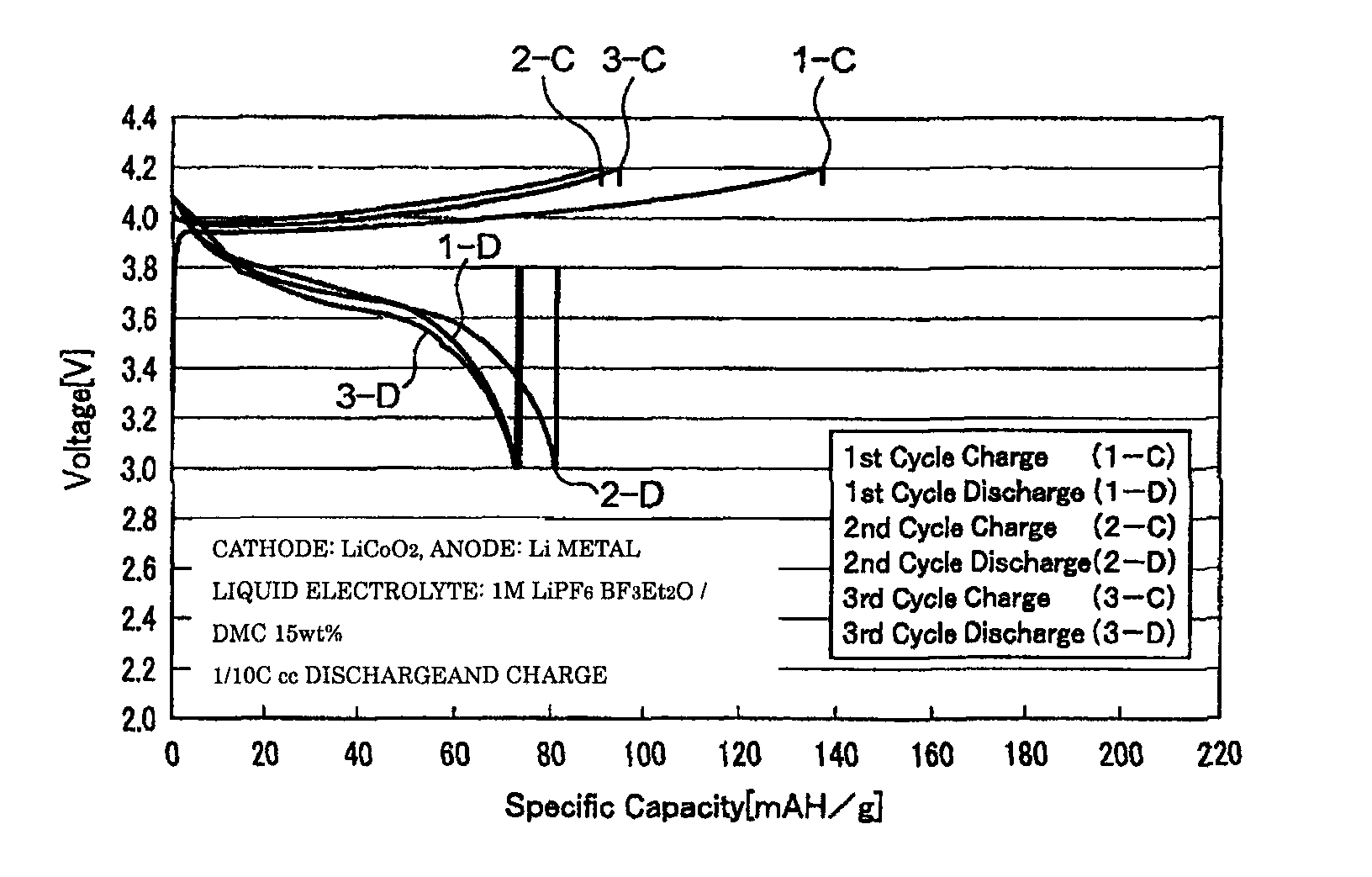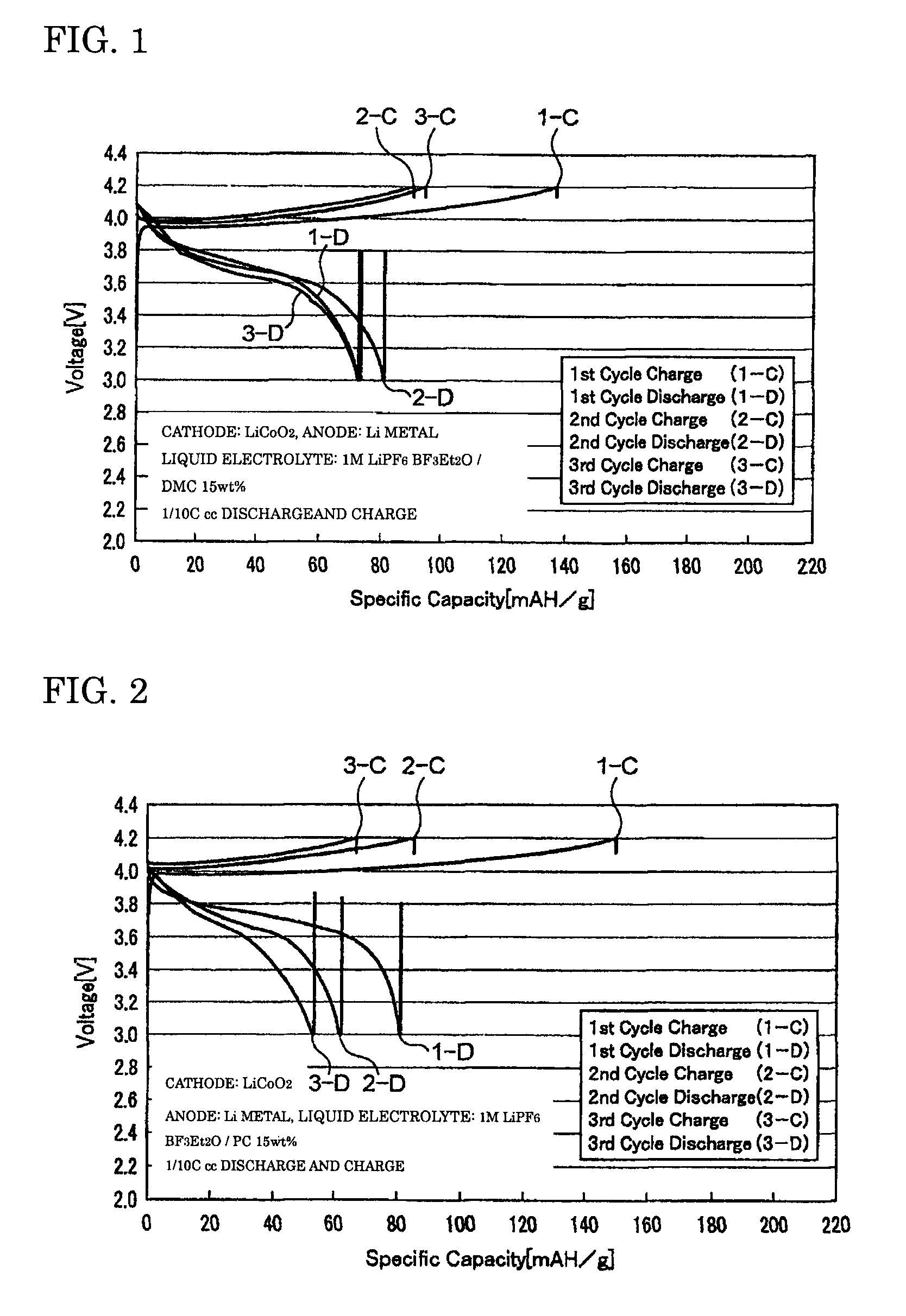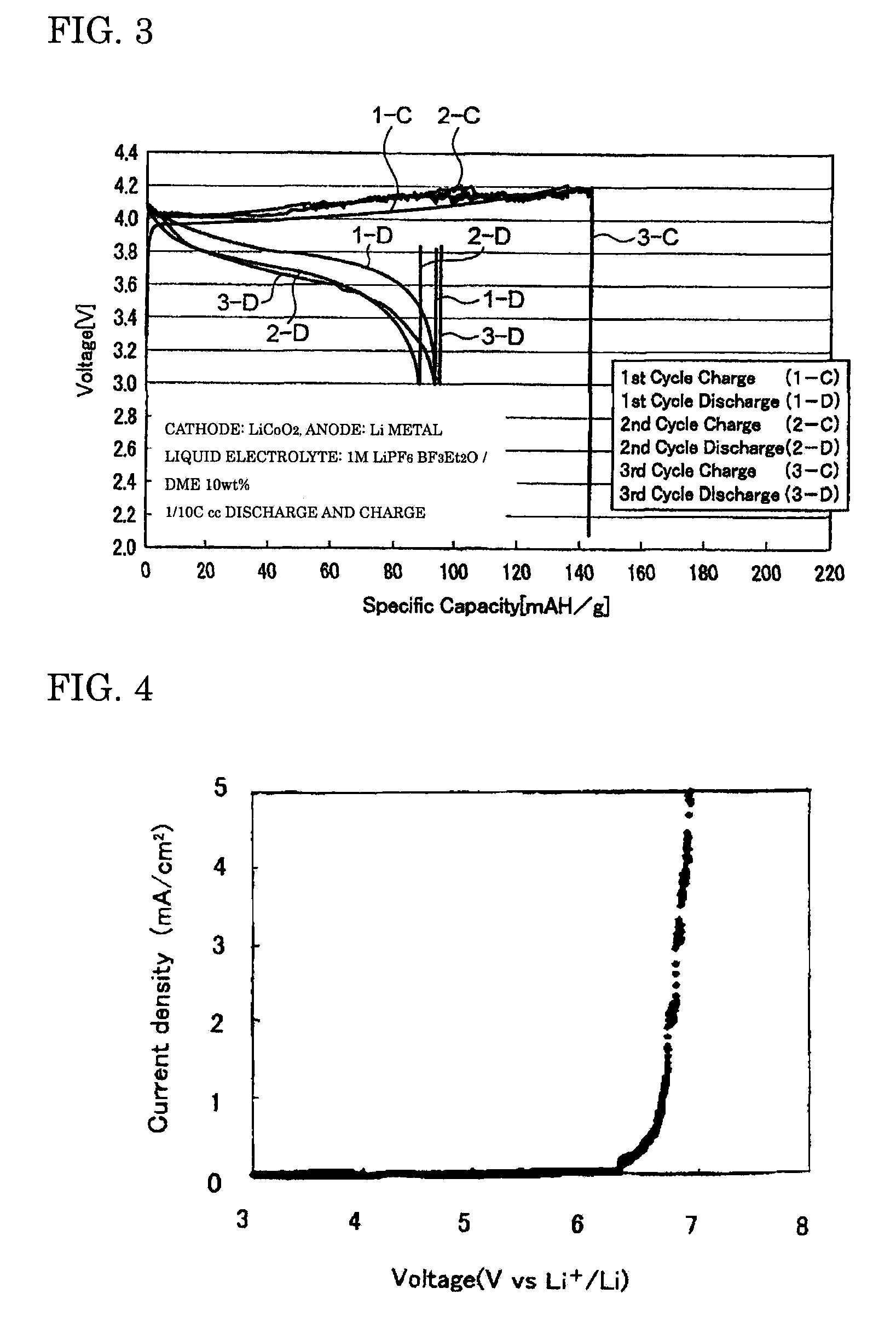Liquid electrolyte for electrochemical device
a technology of electrochemical devices and liquid electrolytes, which is applied in the direction of electrochemical generators, non-aqueous electrolyte cells, inorganic electrolytes, etc., can solve the problems of poor oxidation resistance and achieve excellent oxidation resistance and wide potential window
- Summary
- Abstract
- Description
- Claims
- Application Information
AI Technical Summary
Benefits of technology
Problems solved by technology
Method used
Image
Examples
example 1
Preparation of a Liquid Electrolyte
[0052]A BF3-diethylether complex (BF3Et2O) as a BF3 complex and dimethyl carbonate (DMC) as a solubilizer were prepared, and mixed at a weight ratio of 85:15, to produce a mixed solvent. An electrolyte LiPF6 was dissolved to a concentration of 1 M in this mixed solvent to produce the liquid electrolyte of the present invention.
(Preparation of a Coin Cell-Type Secondary Battery)
[0053]First, a cathode of a coin cell-type secondary battery was prepared. As a binder, PVDF (poly(vinylidene fluoride)) was prepared and dissolved in 1-pyrrolidinone to yield a uniform PVDF solution. Then, LiCoO2 was prepared as a cathode active material, and acetylene black (AB) was prepared as a conductive material, and these materials were ground and then added gradually to the above PVDF solution. Thereafter, this mixture was stirred vigorously for 24 hours to yield highly viscous slurry. Thereafter, this slurry was applied onto an aluminum substrate prepared as a collec...
example 2
[0054]A BF3-diethylether complex (BF3Et2O) as a BF3 complex and propylene carbonate (PC) as a solubilizer were prepared, and mixed at a weight ratio of 85:15, to produce a mixed solvent. An electrolyte LiPF6 was dissolved to a concentration of 1 M in this mixed solvent to produce the liquid electrolyte of the present invention. Then, this liquid electrolyte was used to prepare a coin cell-type secondary battery in the same manner as in Example 1.
example 3
[0055]A BF3-diethylether complex (BF3Et2O) as a BF3 complex and dimethyl ether (DME) as a solubilizer were prepared, and mixed at a weight ratio of 90:10, to produce a mixed solvent. An electrolyte LiPF6 was dissolved to a concentration of 1 M in this mixed solvent to produce the liquid electrolyte of the present invention. Then, this liquid electrolyte was used to prepare a coin cell-type secondary battery in the same manner as in Example 1.
[Evaluation]
[0056]The coin cell-type secondary batteries obtained in Examples 1 to 3 were evaluated for their charge-discharge properties by galvanostatic measurement at a current density of 0.1 mA / cm2 with a battery charging and discharging device (HJ-SM8 system, manufactured by Hokuto Denko Corporation). FIGS. 1 to 3 are graphs showing the charge-discharge properties of the lithium secondary batteries obtained respectively in Examples 1 to 3. The oxidation potential of BF3Et2O as determined by linear sweep voltammetry (FIG. 4) was as high as 6...
PUM
| Property | Measurement | Unit |
|---|---|---|
| temperatures | aaaaa | aaaaa |
| temperature | aaaaa | aaaaa |
| pressure | aaaaa | aaaaa |
Abstract
Description
Claims
Application Information
 Login to View More
Login to View More - R&D
- Intellectual Property
- Life Sciences
- Materials
- Tech Scout
- Unparalleled Data Quality
- Higher Quality Content
- 60% Fewer Hallucinations
Browse by: Latest US Patents, China's latest patents, Technical Efficacy Thesaurus, Application Domain, Technology Topic, Popular Technical Reports.
© 2025 PatSnap. All rights reserved.Legal|Privacy policy|Modern Slavery Act Transparency Statement|Sitemap|About US| Contact US: help@patsnap.com



